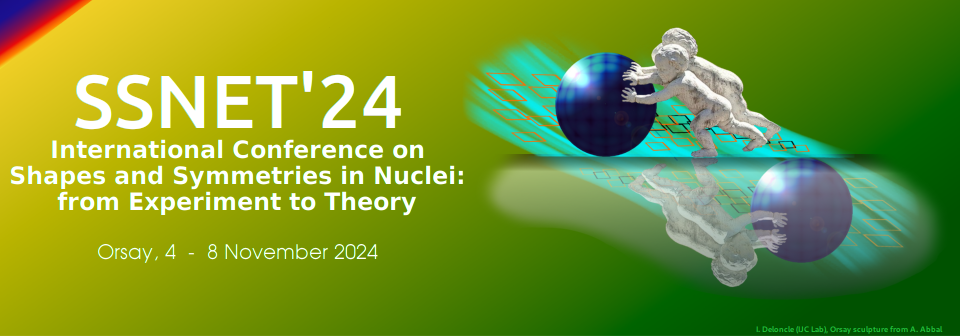Orateur
Description
Abstract: Understanding the structural transition of nuclei at fission limits is a fascinating and ongoing investigation in nuclear physics. The Giant Dipole Resonance (GDR) is a significant probe for investigating the shape evolution of an atomic nucleus [1]. However, it is challenging to differentiate GDR γ-ray emissions before and after the fission reaction, as validated by existing experimental results. It is important to choose the deformation parameters and suitable parametrization method for calculating the total potential energy surfaces and GDR observables [2]. In the present work, we employed the Lublin Strasbourg Drop (LSD) model to calculate the potential energy surface (PES) of Thorium isotopes [3]. The LSD model includes curvature and congruence energy terms not previously included in liquid drop models, which are essential at the limit of fission [3]. Various mathematical functions have been adopted as shape parametrization methods in recent years. These include the traditional Quadrupole Bohr (β, γ) and Cassini (c, r) and the Funny-Hills (c, h, α) shape parametrizations to compute deformation-dependent energy terms. These parametrizations do not have any convergence properties. In this circumstance, K. Pomorski [4] and their research team developed a novel parametrization method based on Fourier series expansion, which we employed to compute the potential energy surface of different thorium isotopes with new collective coordinates, including non-axiality (ε), elongation (q1), left-right asymmetry (q2), and neck thickness (q3). Investigating the GDR observables, such as the GDR width and GDR cross-section, in hot and rotating nuclei at the fission limit will shed to understand the shape transition [5]. The study of the dependence of the GDR observables on nuclear shape transitions at fission limits is in progress.
Reference
1. J. J. Gaardhoje, Ann. Rev. Nucl. Part. Sci. 42, 483 (1992).
2. A. K. Rhine Kumar et al., Phys. Rev. C 96, 024322 (2017).
3. L. L. Liu, Y. J. Chen, X. Z. Wu et al., Phys. Rev. C 103, 044601 (2021).
4. K. Pomorski and J. Dudek, Phys. Rev. C 67, 044316 (2003).
5. C. Schmitt, K. Pomorski, B. Nerlo-Pomorska et al., Phys. Rev. C 95, 034612 (2017).
6. M. Kmiecik et al., Phys. Rev. C 70, 064317 (2004).

